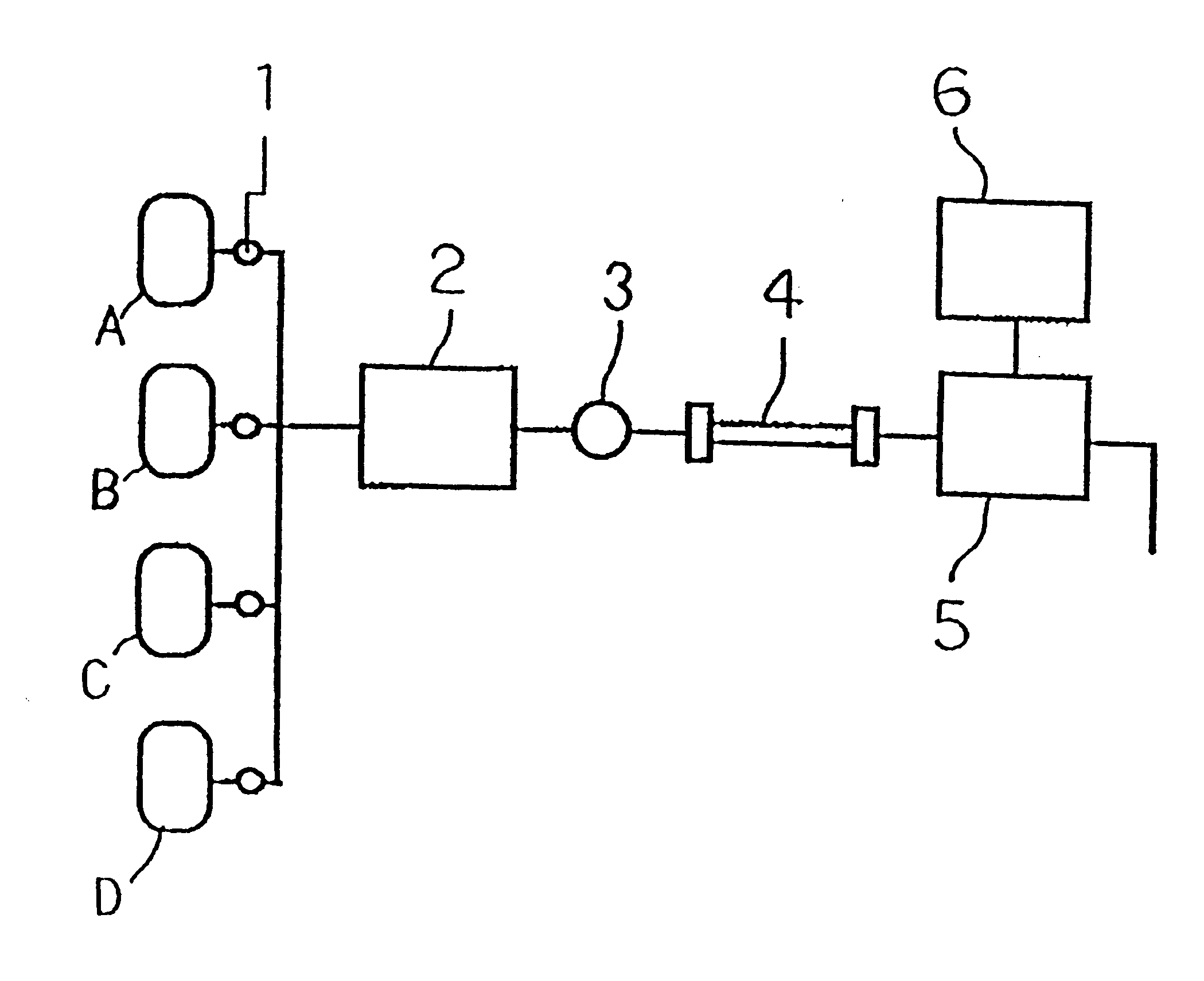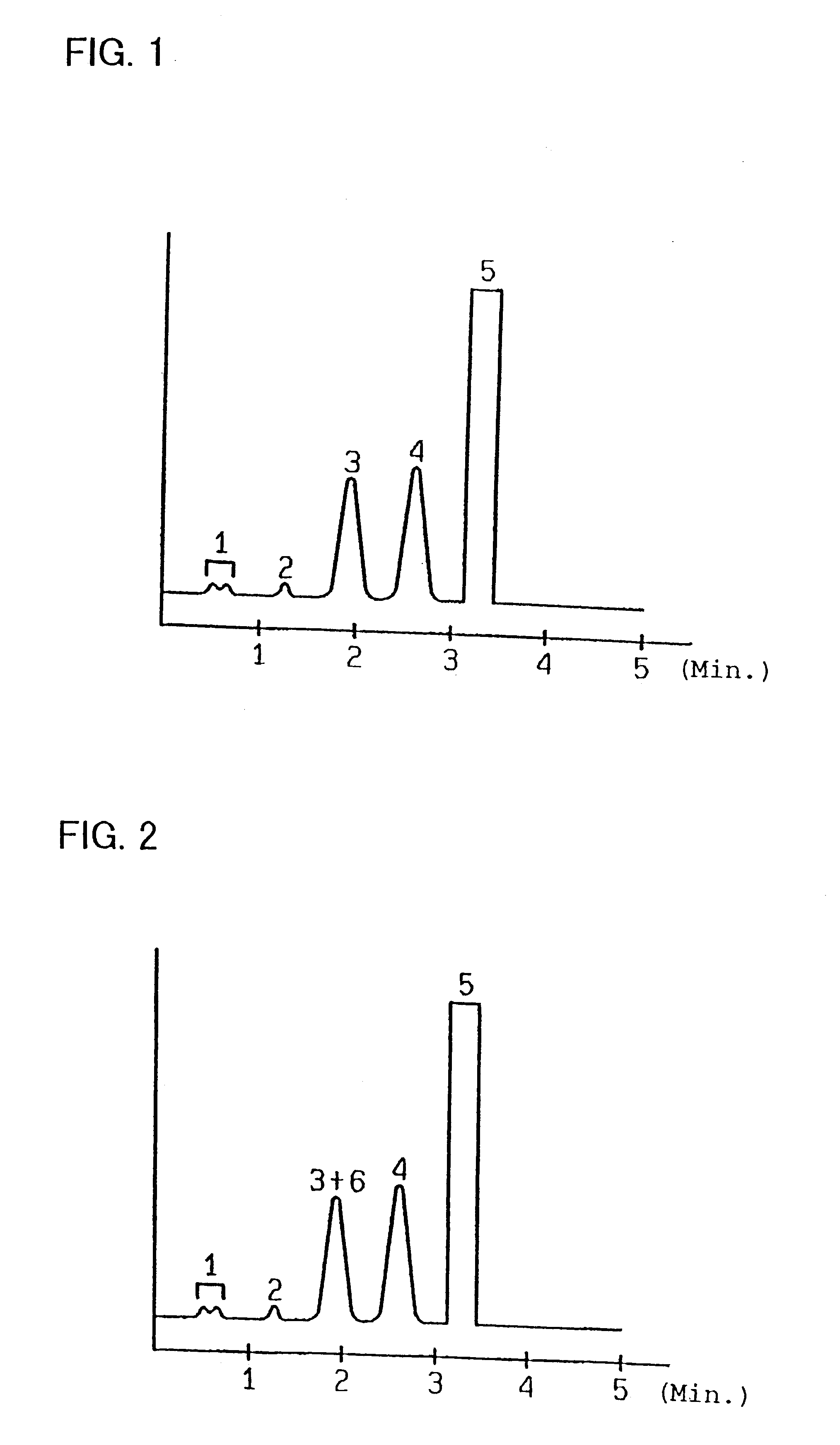Method for determination of hemoglobins
a hemoglobin and method technology, applied in the field of hemoglobin determination, can solve the problems of limited ph range of an eluent, difficult to introduce a controlled amount of ion exchange group-containing compounds into the polymeric particles, and reduce resolution, so as to reduce the occurrence of clogging, improve the separation effect, and reduce the tendency of hemoglobins
- Summary
- Abstract
- Description
- Claims
- Application Information
AI Technical Summary
Benefits of technology
Problems solved by technology
Method used
Image
Examples
example 2
Measurement of hemoglobins was performed in the same manner as in Example 1, with the exception that the eluents were changed in composition to the followings. Satisfactory chromatograms were obtained as similar to those shown in FIGS. 1-3.
Eluents:
eluent A: 20 mM succinate-20 mM phosphate buffer (pH 5.3) containing 55 mM perchloric acid
eluent B: 20 mM succinate-20 mM phosphate buffer (pH 8.0) containing 250 mM perchloric acid
The pKa values of succinate are indicated in Table 1.
example 3
Measurement of hemoglobins was performed in the same manner as in Example 1, with the exception that the eluents were changed in composition to the followings. Satisfactory chromatograms were obtained as similar to those shown in FIGS. 1-3.
Eluents:
eluent A: 10 mM maleate-40 mM phosphate buffer (pH 5.3) containing 55 mM sodium nitrate
eluent B: 10 mM maleate-40 mM phosphate buffer (pH 8.3) containing 200 mM sodium nitrate
The pKa values of maleate are given in Table 1.
example 4
Measurement of hemoglobins was performed in the same manner as in Example 1, with the exception that the eluents were changed in composition to the followings. Satisfactory chromatograms were obtained as similar to those shown in FIGS. 1-3.
Eluents:
eluent A: 10 mM maleate-50 mM phosphate buffer (pH 5.3) containing 50 mM perchloric acid
eluent B: 8 mM maleate-50 mM phosphate buffer (pH 8.3) containing 200 mM perchloric acid
PUM
| Property | Measurement | Unit |
|---|---|---|
| Temperature | aaaaa | aaaaa |
| Temperature | aaaaa | aaaaa |
| Temperature | aaaaa | aaaaa |
Abstract
Description
Claims
Application Information
 Login to View More
Login to View More - R&D
- Intellectual Property
- Life Sciences
- Materials
- Tech Scout
- Unparalleled Data Quality
- Higher Quality Content
- 60% Fewer Hallucinations
Browse by: Latest US Patents, China's latest patents, Technical Efficacy Thesaurus, Application Domain, Technology Topic, Popular Technical Reports.
© 2025 PatSnap. All rights reserved.Legal|Privacy policy|Modern Slavery Act Transparency Statement|Sitemap|About US| Contact US: help@patsnap.com



